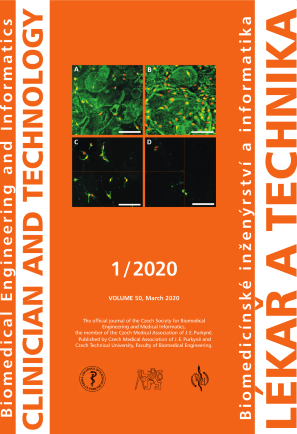MATERIALS SUITABLE TO SIMULATE SNOW DURING BREATHING EXPERIMENTS FOR AVALANCHE SURVIVAL RESEARCH
DOI:
https://doi.org/10.14311/CTJ.2020.1.05Keywords:
avalanche snow, breathing, hypercapnia, snow modelAbstract
Terrain experiments for avalanche survival research require appropriate snow conditions, which may not be available year round. To prepare these experiments and test the protocol, it might be advantageous to test them in a laboratory with a snow model. The aim of the study was to find a material that can be used to simulate avalanche snow for studying gas exchange of a person covered with avalanche snow. Three loose porous materials (perlite, wood shavings and polystyrene) were tested in two forms—dry and moisturized. Each volunteer underwent six phases of the experiment in random order (three materials each dry or moisturized) during experimental breathing into the tested materials. Physiological parameters and fractions of oxygen and carbon dioxide in the airways were recorded continuously. All the materials selected as possible models of the avalanche snow negatively affected gas exchange during the breathing of the volunteers in a very similar extent. The time courses of the recorded parameters were very similar and were bordered from one side by the wet perlite and from the other side by the dry perlite. Therefore, other tested materials may be substituted with perlite with and appropriate water content. From all the tested materials, perlite is the best to simulate avalanche snow because of its homogeneity, reproducibility and easy manipulation.
Downloads
Published
Issue
Section
License
Copyright (c) 2020 Karel Roubík, Simon Walzel, Lenka Horakova, Alicia Refalo, Karel Sykora, Vaclav Ort, Ladislav Sieger

This work is licensed under a Creative Commons Attribution 4.0 International License.
Authors who publish with this journal agree to the following terms:
- Authors retain copyright and grant the journal right of the first publication with the work simultaneously licensed under a Creative Commons Attribution License (https://creativecommons.org/licenses/by/4.0/) that allows others to share the work with an acknowledgment of the work's authorship and initial publication in CTJ.
- Authors are able to enter into separate, additional contractual arrangements for the non-exclusive distribution of the journal’s published version of the work (e.g., post it to an institutional repository or publish it in a book), with an acknowledgment of its initial publication in this journal.
- Authors are permitted and encouraged to post their work online (e.g., in institutional repositories or on their website or ResearchGate) prior to and during the submission process, as it can lead to productive exchanges.
CTJ requires that all of the content of the manuscript has been created by its respective authors or that permission to use a copyrighted material has been obtained by the authors before submitting the manuscript to CTJ. CTJ requires that authors have not used any copyrighted material illegally, as for example a picture from another journal or book, a photo, etc. It is the author’s responsibility to use only materials not violating the copyright law. When in doubt, CTJ may ask the authors to supply the pertinent permission or agreement about the use of a copyrighted material.
The opinions expressed in CTJ articles are those of authors and do not necessarily reflect the views of the publishers or the Czech Society for Biomedical Engineering and Medical Informatics.


